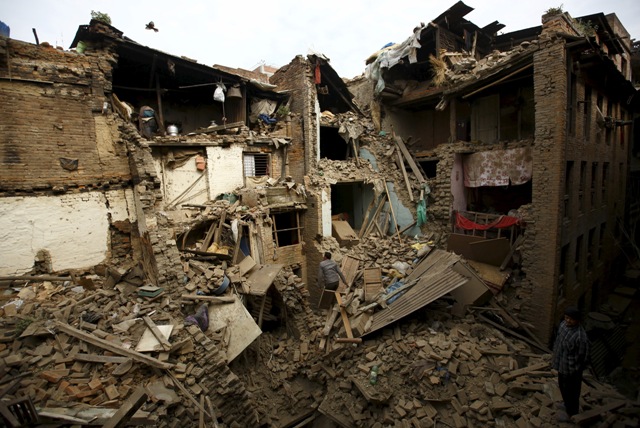
Scientists from the U.S. and Bangladesh have warned in a peer-reviewed paper they published in the Nature Geoscience journal that a megathrust earthquake, with its epicentre in eastern India or Bangladesh, could kill several crore of people in the two countries. The earthquake may not be imminent, but is said to be inevitable — meaning, it's a matter of time.
The researchers — Michael Steckler, Dhiman Ranjan Mondal, Syed Humayun Akhter, Leonardo Seeber, Lujia Feng, Jonathan Gale, Emma M Hill and Michael Howe — say in the paper: "We suggest that the presence of a locked megathrust plate boundary represents an under-appreciated hazard in one of the most densely populated regions of the world."
A Thomson Reuters Foundation report quoted Steckler, a geophysicist at New York's Lamont-Doherty Earth Observatory (LDEO) of the Columbia University and the lead author of the study, as saying that more research would be needed to come up with a proper time-frame for such a megathrust earthquake. The total population in the area is 14 crore.
The fault — along which the megathrust earthquake has been predicted — is somewhere on the Bangladesh-Myanmar border, where one tectonic plate is sliding onto another at a rate of a few milimetres per year.
Steckler was quoted as saying in an LDEO piece: "Strain between the plates has been building for at least 400 years — the span of reliable historical records, which lack reports of any mega-quake. When an inevitable release comes, the shaking is likely to be larger than 8.2, and could reach a magnitude of 9, similar to the largest known modern quakes."
Akhter, a seismologist at the Dhaka University Earth Observatory, was quoted as saying by the LDEO article: "All the natural gas fields, heavy industries and electric power plants [in Bangladesh] are located close to potential earthquakes, and they are likely to be destroyed. In Dhaka, the catastrophic picture will be beyond our imagination, and could even lead to abandonment of the city."
According to the LDEO: "The newly identified zone [where the earthquake is expected to take place] is an extension of the same tectonic boundary that caused the 2004 Indian Ocean undersea quake, some 1,300 miles south."
The piece also said: "In any case, Bangladesh and eastern India sit atop a landscape vulnerable even to moderate earthquakes: the vast delta of the Ganga and Brahmaputra rivers."
India is part of a giant tectonic plate along with the Indian Ocean that is jutting into the tectonic plate of the rest of Asia, which has given rise to the Himalayas — the tallest mountain range in the world. It is believed that the jutting also resulted in the devastating 2015 Nepal earthquake, which led to the death of 8,000 people.

















